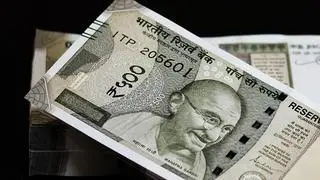The impact of the virus and lockdown on the economy can be clearly seen in the GST collections, with the first-quarter revenues down 41 per cent over last year, despite signs of an improvement in June, when the lockdown was eased. This has impacted the Centre’s revenues as well as GST transfers to the States, which have fallen below the mandated 14 per cent annual growth rate as promised under the GST law for five years, or till 2021-22 (taking 2015-16 revenues of States as the base year). The States’ combined annual expenditure can be expected to be higher than the Centre at ₹35-40 lakh crore, with the size of the Union Budget 2020-21 placed at ₹30.4 lakh crore. Additional health and relief spending by the States amid the revenue crunch has led to the States increasingly getting restive about their share of GST revenues. The States get nearly half their revenues of over ₹30 lakh crore from SGST (20 per cent) and Central tax transfers (27 per cent), according to assessments made by experts as well as the RBI and India Ratings. If a growth rate of 4 per cent in 2019-20 put paid to a 14 per cent increase in tax revenues, slowing down collections and transfers, the pandemic has created a situation where an absolute drop in collections cannot be ruled out.
Last month, the Centre transferred GST dues for the November 2019-February 2020 period amounting to ₹36,400 crore, leaving the States woefully short of funds amidst the crisis induced by the pandemic. Tax calculations need to be reworked, for which the GST Council must convene at the earliest, with the 15th Finance panel members joining in the discussions. So far, the Centre and RBI have taken bold reform steps as well as liquidity measures for MSMEs, besides raising the borrowing limits for the States under the ways and means advances window. Now, the Centre must grasp the nettle by squarely addressing the issue of revenue shortfall and its federal implications. Its bid to impose conditionalities on States for additional borrowings seems contrary to ‘cooperative federalism’. The States need fiscal room, as a deep cutback in expenditure can derail growth.
However, it is important for States to accept that the growth assumptions underlying the 14 per cent annual increase in revenues, built into the law, simply do not hold now. They should settle for a lower nominal increase with an extension of the compensation period by a few years. Instead of a 50:50 sharing of GST revenues, the SGST component can be raised for a few years till the economy overcomes the crisis. A push for infrastructure, with the Centre and States sharing costs and benefits, should act as the driving force for creating a consensus around tax sharing.








Comments
Comments have to be in English, and in full sentences. They cannot be abusive or personal. Please abide by our community guidelines for posting your comments.
We have migrated to a new commenting platform. If you are already a registered user of TheHindu Businessline and logged in, you may continue to engage with our articles. If you do not have an account please register and login to post comments. Users can access their older comments by logging into their accounts on Vuukle.